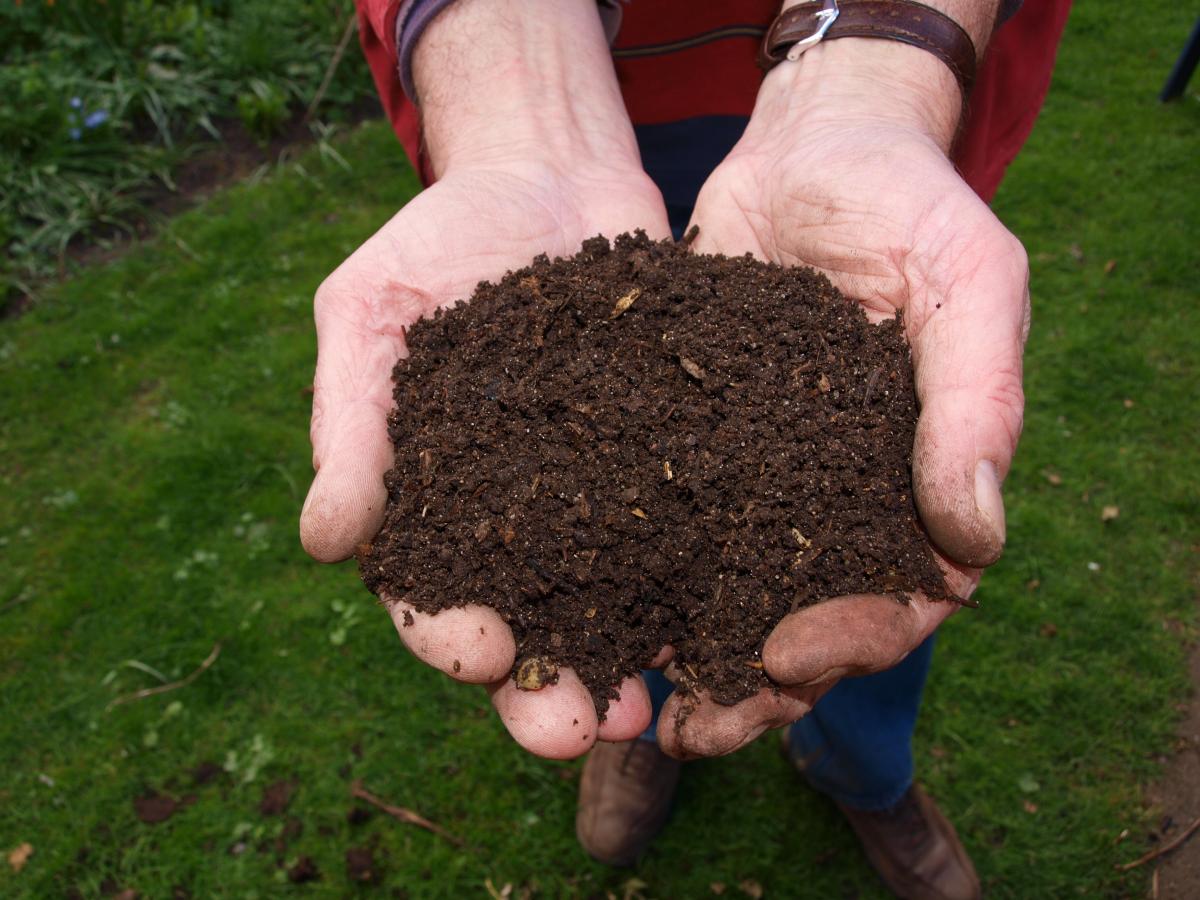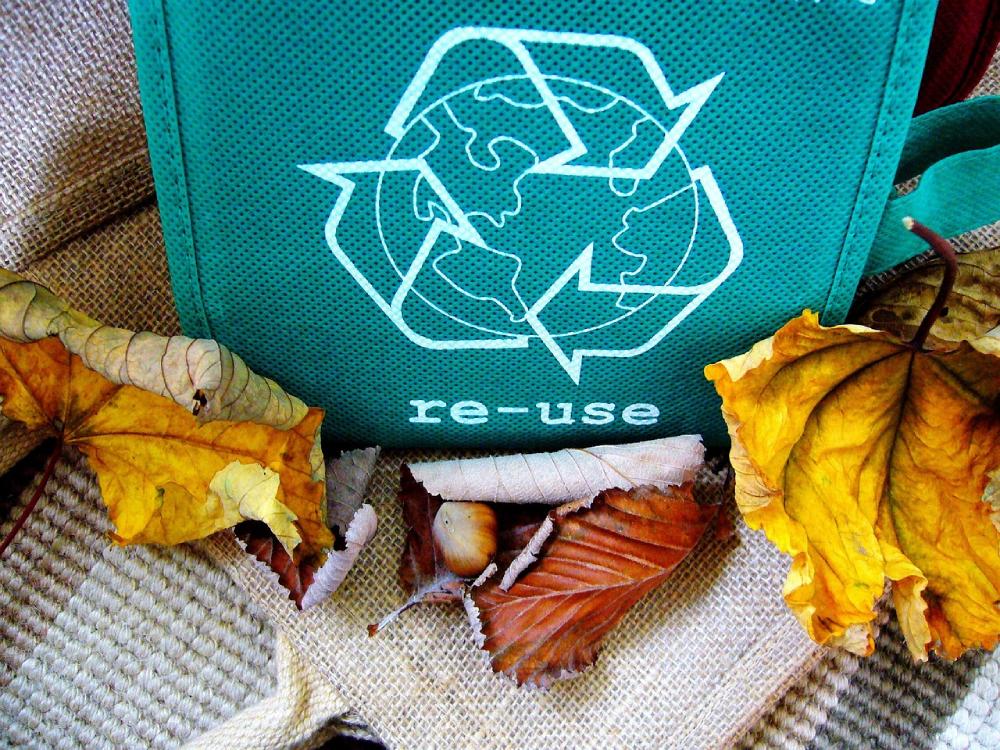Introduction
Composting is a powerful practice that not only helps us reduce waste but also plays a vital role in sustainable living. By transforming food scraps and organic materials into nutrient-rich soil, composting provides numerous benefits for both the environment and gardens.
Importance of Composting for Sustainable Living
Composting is an essential component of sustainable living because it helps divert organic waste from landfills. When food scraps and yard waste decompose in landfills, they release methane, a potent greenhouse gas that contributes to climate change. By composting these materials instead, we can significantly reduce our carbon footprint and minimize environmental pollution.
Composting also helps conserve valuable resources. By recycling organic matter back into the soil, we can enhance soil fertility, reduce the need for chemical fertilizers, and promote healthier plant growth. It’s a natural cycle of nourishing the Earth while reducing our reliance on synthetic products and unsustainable practices.
Benefits of Composting for the Environment and Gardens
-
Soil Enrichment: Compost is often referred to as “black gold” because of its remarkable ability to enhance soil health. When added to gardens or landscapes, compost improves soil structure, moisture retention, and nutrient content. It acts as a natural fertilizer, providing a balanced blend of organic matter, essential nutrients, and beneficial microorganisms, resulting in healthier plants and abundant harvests.
-
Waste Reduction: Composting significantly reduces the amount of waste that goes to landfills. According to the Environmental Protection Agency (EPA), organic materials such as food scraps and yard waste make up a substantial portion of our waste stream. By composting these materials, we can divert them from landfills, minimizing methane emissions and reducing the strain on waste management systems.
-
Erosion Prevention: Compost plays a vital role in preventing soil erosion. When applied to bare or degraded soil, compost acts as a protective cover, reducing water runoff and promoting the growth of vegetation. This helps stabilize slopes, control erosion, and preserve the integrity of our landscapes.
-
Water Conservation: Compost improves soil’s water-holding capacity, reducing the need for frequent watering. By retaining moisture in the soil, compost helps plants withstand drought conditions and reduces water consumption. This is especially crucial in regions facing water scarcity and in promoting responsible water management practices.
-
Biodiversity Support: Composting fosters biodiversity by creating a favorable environment for beneficial microorganisms, earthworms, and other soil-dwelling organisms. These organisms break down organic matter, improve soil structure, and enhance nutrient cycling. A healthy and biodiverse soil ecosystem is the foundation for a thriving and resilient garden.
By embracing composting, we not only reduce waste and nourish our gardens but also contribute to a more sustainable and ecologically balanced future. In the following sections, we will explore the process of composting and discover how to transform food scraps into nutrient-rich soil.
Getting Started with Composting
Composting is a simple and rewarding process that anyone can do to transform food scraps and organic materials into nutrient-rich soil. To get started, it’s important to understand the basic principles of composting, identify suitable materials, and maintain a proper balance of green and brown components.
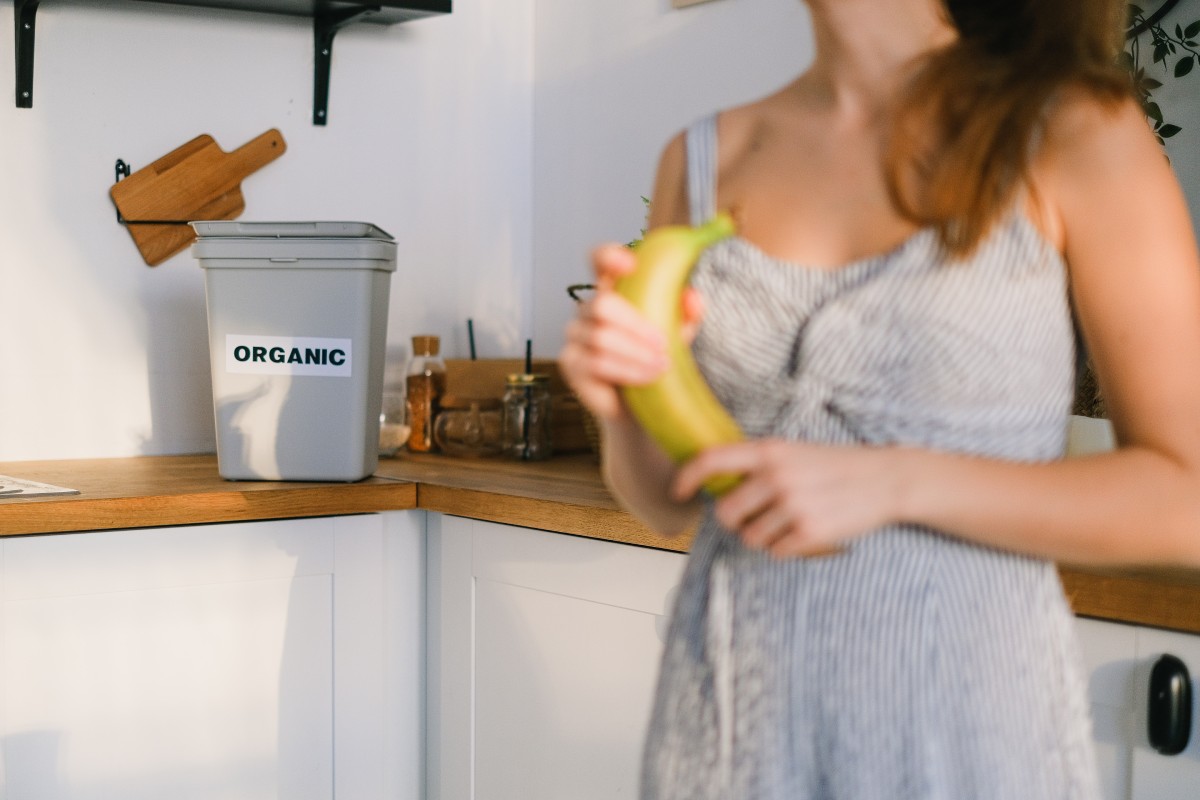
Basic Principles of Composting
Composting is essentially a natural decomposition process. The key principles to keep in mind are:
-
Organic Matter: Composting requires the use of organic materials, such as fruit and vegetable scraps, coffee grounds, tea leaves, yard trimmings, and plant-based materials. These materials contain carbon, which is a necessary component for successful composting.
-
Air and Moisture: Adequate airflow and moisture are crucial for the decomposition process. Oxygen supports the growth of aerobic microorganisms that break down the organic matter. Maintaining the right moisture level (usually damp but not waterlogged) helps facilitate microbial activity.
-
Size and Mixing: Chopping or shredding larger organic materials accelerates the composting process by increasing the surface area for microbial action. Regularly mixing the compost pile or using a compost tumbler helps distribute moisture and air, ensuring efficient decomposition.
Suitable Materials for Composting
You can compost a wide range of organic materials, including:
- Fruit and vegetable scraps
- Coffee grounds and filters
- Tea leaves and tea bags (remove staples and strings)
- Yard trimmings (e.g., grass clippings, leaves, small branches)
- Plant-based materials (e.g., straw, hay, shredded paper, cardboard)
- Eggshells
- Nutshells (avoid walnut shells as they contain substances that can inhibit plant growth)
- Fireplace ashes (in moderation, as they can raise pH levels)
It’s important to avoid composting meat, dairy products, oily foods, pet waste, and diseased plants, as these can attract pests or contain pathogens that may persist in the compost.
Balancing Green and Brown Materials
Composting involves balancing “green” (nitrogen-rich) and “brown” (carbon-rich) materials. Green materials provide nitrogen, moisture, and nutrients, while brown materials contribute carbon and help create airflow. Maintaining the right balance between these components is essential for successful composting.
-
Green Materials: Examples include fresh grass clippings, kitchen scraps, coffee grounds, and plant trimmings. These materials are typically moist and rich in nitrogen, which helps speed up the decomposition process.
-
Brown Materials: Brown materials include dry leaves, straw, shredded paper, and cardboard. These materials are dry and carbon-rich, providing structure, absorbing excess moisture, and preventing the compost pile from becoming too wet or compacted.
A good rule of thumb is to aim for a roughly equal volume of green and brown materials. As you add green materials, layer them with brown materials to maintain a balanced composition and promote airflow. Regularly turning or mixing the compost pile will help distribute the materials and enhance the decomposition process.
By following these basic principles and understanding the suitable materials for composting, you’re well on your way to creating nutrient-rich soil that will benefit your plants, garden, and the environment. In the next section, we will delve deeper into the composting process and explore different methods to help you achieve optimal results.
Choosing a Composting Method
Choosing the right composting method is essential to meet your specific needs and optimize the composting process. Let’s compare three popular methods: traditional bin composting, vermicomposting, and trench composting, while exploring their advantages and considerations.
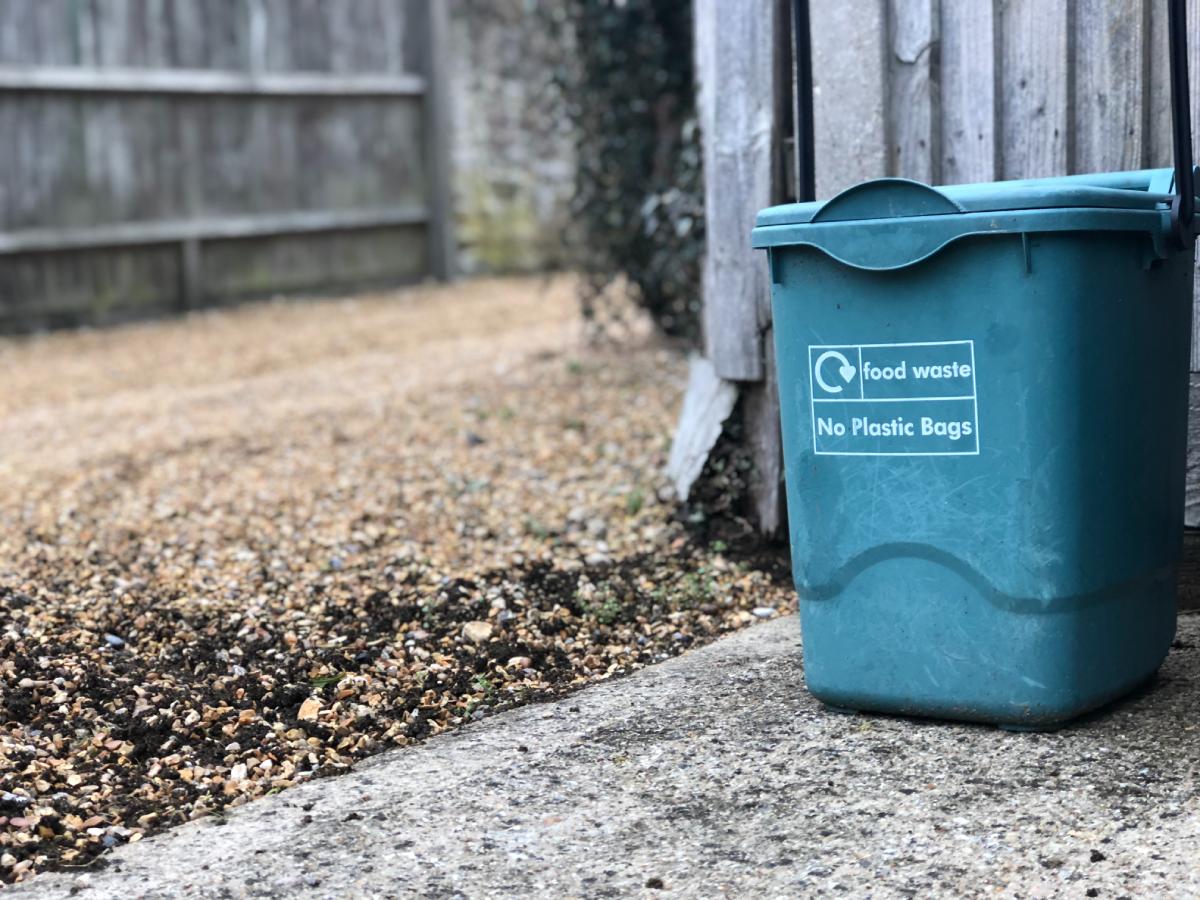
Traditional Bin Composting
Traditional bin composting is a widely used method that involves creating a compost pile in a designated bin or container. It offers several benefits:
- Versatility: Bin composting can be done in various sizes, from small bins suitable for urban spaces to larger ones for larger quantities of organic waste.
- Control: With a bin, you have greater control over the composting conditions, such as moisture, aeration, and temperature.
- Aesthetics: A compost bin helps keep the compost pile contained and visually organized, making it an ideal option for those concerned about the appearance of their composting area.
However, there are a few considerations with traditional bin composting:
- Space Requirements: Depending on the size of the bin, you need adequate space in your yard or garden for the compost pile.
- Maintenance: Regular turning or mixing of the compost pile is necessary to ensure proper aeration and decomposition.
- Time: Traditional bin composting typically takes several months to a year for the organic materials to fully break down into nutrient-rich compost.
Vermicomposting
Vermicomposting, also known as worm composting, utilizes special composting worms to accelerate the decomposition process. Here are the key advantages of vermicomposting:
- Speed: Vermicomposting is a faster method compared to traditional bin composting. The worms help break down the organic matter more quickly, resulting in nutrient-rich compost in a shorter timeframe.
- Indoor Option: Vermicomposting can be done indoors, making it suitable for those with limited outdoor space or living in apartments.
- Higher Nutrient Content: Vermicompost produced by worms is known for its high nutrient content, making it an excellent choice for enriching soil.
However, there are a few considerations to keep in mind with vermicomposting:
- Worm Care: Proper care of the composting worms is necessary to ensure their well-being and maintain optimal conditions for decomposition.
- Specific Conditions: Vermicomposting requires specific conditions such as appropriate bedding material, moisture levels, and temperature range to support the worms’ activity.
- Odor Management: While vermicomposting typically doesn’t produce strong odors, proper management of the composting process and avoiding certain food scraps can help prevent unpleasant smells.
Trench Composting
Trench composting involves burying organic waste directly into a trench or hole in the ground. Here are the advantages of this method:
- Convenience: Trench composting is convenient, especially for disposing of kitchen scraps directly in the garden.
- Soil Improvement: The buried organic waste enriches the soil and improves its structure, providing nutrients to nearby plants.
- No Visible Composting Area: Since the organic waste is buried, there is no visible compost pile, making it a good option for those who prefer a hidden composting method.
Consider these factors when opting for trench composting:
- Digging and Space: You’ll need to dig trenches or holes in your garden, so sufficient space and effort are required.
- Decomposition Time: The decomposition time with trench composting may vary depending on the environmental conditions and the size of the organic waste.
Selecting the Right Composting Method for You
When choosing a composting method, consider factors such as available space, time commitment , convenience, and specific needs. If you have a large outdoor space and prefer a visible composting area, traditional bin composting may be the ideal choice. For those with limited space or living in apartments, vermicomposting offers a compact and indoor-friendly option. If you want a discreet method without the need for dedicated composting bins, trench composting might be suitable.
Remember, regardless of the method you choose, the key to successful composting lies in maintaining the right balance of organic materials, proper moisture levels, and regular monitoring of the composting process. Now that you have explored the different composting methods, let’s move on to the next section to learn about the steps involved in creating your own compost pile.
Setting Up Your Compost System
Setting up a proper compost system is crucial for successful composting and the transformation of food scraps into nutrient-rich soil. In this section, we’ll explore the key aspects of creating an effective composting setup.
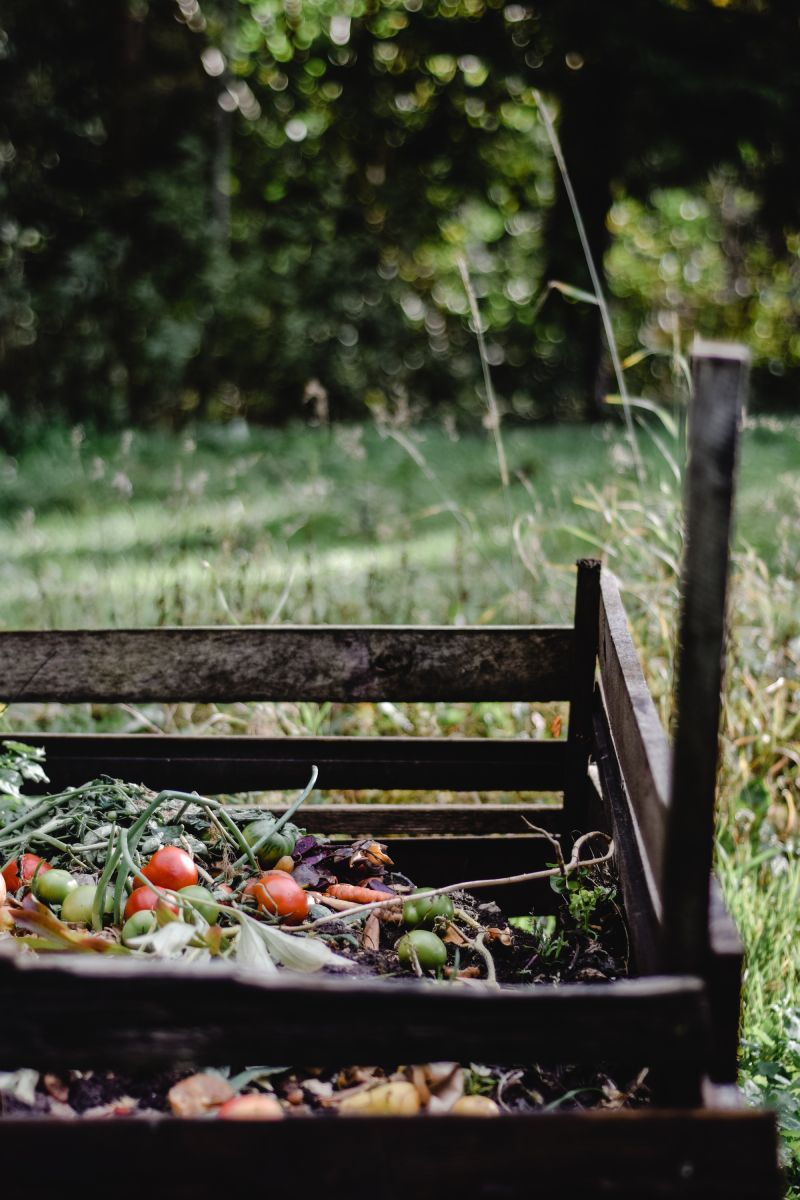
Selecting an Appropriate Location
Choosing the right location for your compost pile or bin is essential for optimal decomposition and convenience. Consider the following factors:
- Accessibility: Select a location that is easily accessible from your kitchen or garden, making it convenient to deposit food scraps regularly.
- Sunlight Exposure: While composting can occur in both sunny and shaded areas, a partially sunny spot can help maintain ideal temperatures for microbial activity.
- Drainage: Ensure that the chosen location allows for proper drainage to prevent waterlogging, which can hinder the composting process.
- Proximity to Neighbors: If you have neighbors nearby, be mindful of potential odors and ensure your composting setup is placed at an appropriate distance from their living spaces.
Necessary Components of a Compost System
To create a functional compost system, you’ll need the following components:
Container or Compost Bin
Choose a container or compost bin that suits your needs and available space. It should be sturdy, well-ventilated, and allow for easy access to turn or mix the compost. Options range from ready-made compost bins to DIY structures using pallets or wire mesh.
Aeration
Proper aeration is vital for composting. It ensures the circulation of oxygen, facilitating the decomposition process. Consider the following practices:
- Layering: Alternate between green and brown materials in your compost pile to create air pockets and promote airflow.
- Turning: Regularly turn or mix the compost pile to introduce fresh oxygen and prevent compaction.
- Adding Bulky Materials: Incorporate coarse materials like twigs or shredded newspaper to create space for airflow.
Moisture Control
Maintaining the right moisture level in your compost pile is crucial for microbial activity and decomposition. Here’s how to manage moisture effectively:
- Balance: Aim for a balanced moisture content, similar to a wrung-out sponge. Moisture is necessary but avoid excessive wetness.
- Watering: If your compost pile is dry, sprinkle water to moisten the materials. Conversely, if it’s too wet, add dry carbon-rich materials to absorb excess moisture.
- Covering: Use a breathable cover or tarp to protect the compost pile from heavy rain, which can oversaturate it.
Tips for Maintaining a Healthy Compost Pile
To ensure a thriving compost pile, follow these tips for maintenance:
- Layering: As you add food scraps and organic materials, layer them with carbon-rich brown materials, such as dried leaves or shredded paper, to maintain the right balance of greens and browns.
- Chop or Shred: Chop or shred larger food scraps and yard waste into smaller pieces to accelerate decomposition.
- Avoid: Meat, Dairy, and Oily Foods: Exclude meat, dairy products, and oily foods from your compost pile to avoid attracting pests and creating unpleasant odors.
- Regular Turning: Turn your compost pile every few weeks to mix the materials, promote aeration, and speed up decomposition.
- Patience: Composting is a natural process that takes time. Be patient, and in a few months to a year, you’ll have nutrient-rich compost ready for your garden.
With your compost system properly set up, you’re well on your way to transforming food scraps into valuable compost, contributing to a more sustainable lifestyle. In the next section, we’ll delve into the process of composting and the steps involved in creating high-quality compost.
Composting Do’s and Don’ts
Composting is a dynamic process that requires attention to what goes into your compost pile. In this section, we’ll explore the essential do’s and don’ts of composting to help you create a successful and thriving composting system.
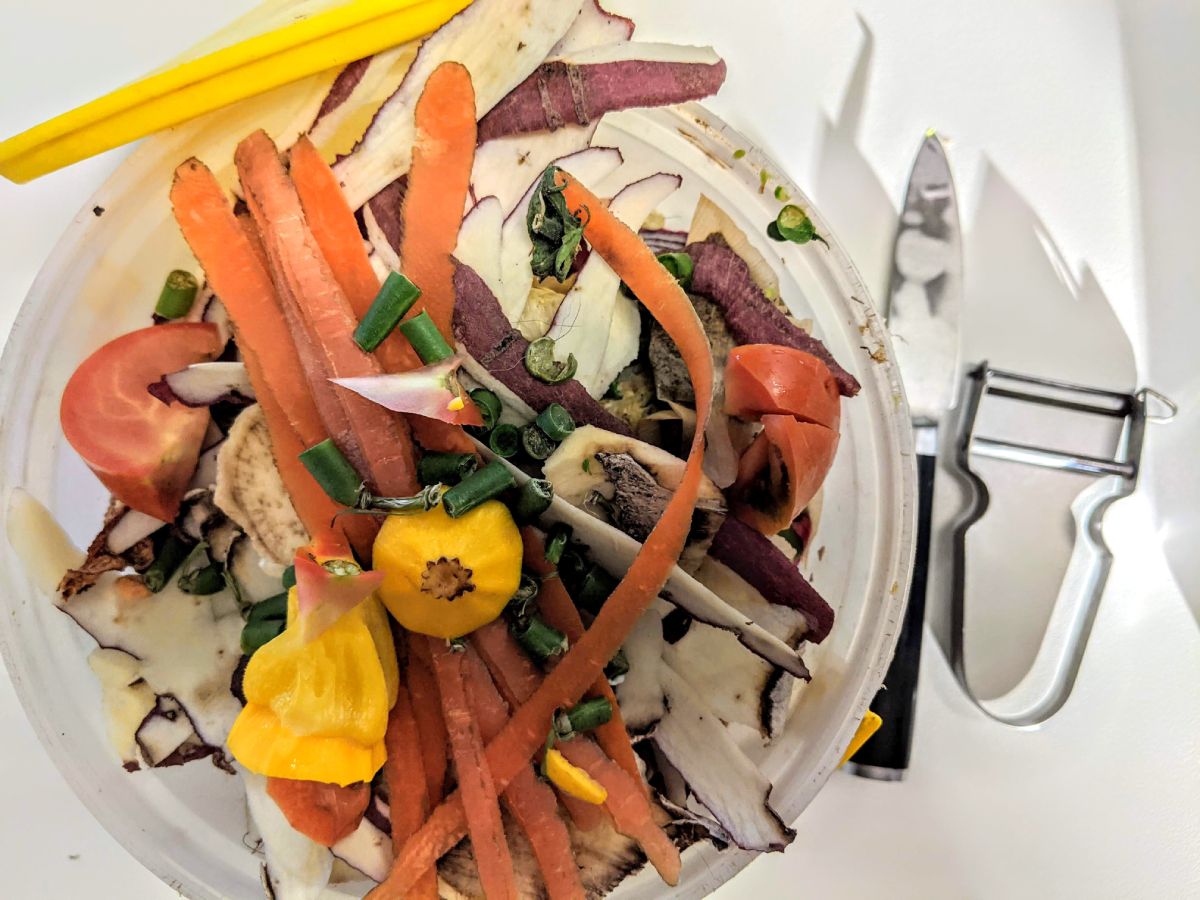
Compostable and Non-Compostable Items
Understanding what items can and cannot be composted is crucial for maintaining a healthy compost pile. Here are the key guidelines to follow:
Compostable Items
- Fruit and vegetable scraps: Including peels, cores, and seeds.
- Coffee grounds and tea leaves: These add valuable nutrients to your compost.
- Eggshells: Crushed eggshells can be added for a calcium boost.
- Garden trimmings: Such as leaves, grass clippings, and small prunings.
- Straw and hay: Great sources of carbon-rich materials.
- Paper products: Shredded newspaper, cardboard, and paper towels (avoid glossy or heavily inked paper).
Non-Compostable Items
- Meat and dairy products: These can attract pests and create odors.
- Oily or greasy foods: They can disrupt the composting process.
- Processed foods: Avoid composting processed foods, as they may contain additives that are not suitable for compost.
- Coal or charcoal ash: They can contain harmful substances.
- Diseased plants and weeds with seeds: To prevent the spread of diseases and weed growth.
- Pet waste: Pet feces can contain pathogens that are harmful to humans.
Remember, a healthy balance between green (nitrogen-rich) and brown (carbon-rich) materials is essential for successful composting.
Proper Layering and Turning
Achieving a well-balanced compost pile involves proper layering and turning. Follow these practices for optimal results:
Layering
- Alternate: Layer green and brown materials to create a balanced compost pile. Add a layer of nitrogen-rich green materials (food scraps, grass clippings) and cover it with a layer of carbon-rich brown materials (dried leaves, shredded paper).
Turning
- Aerate: Regularly turn or mix your compost pile to introduce oxygen and promote decomposition. This helps avoid compaction and ensures even decomposition of materials.
- Frequency: Aim to turn the pile every two to four weeks. Use a garden fork or shovel to mix the materials thoroughly.
Managing Potential Issues
Composting can occasionally present challenges. Here are some tips to address common concerns:
Odors
- Balance: Ensure a proper balance of green and brown materials to prevent odors. If you notice a foul smell, add more brown materials and turn the pile to increase airflow.
- Avoid Certain Items: Exclude meat, dairy, and oily foods from your compost pile to prevent unpleasant odors.
Pests
- Cover: Use a layer of brown materials or a breathable cover to deter pests from accessing your compost pile.
- Avoid Attraction: Do not compost meat, dairy, or greasy foods, as they can attract unwanted pests.
By following these do’s and don’ts, you’ll be well-equipped to create a successful composting system that transforms your food scraps into nutrient-rich soil. In the next section, we’ll explore the final steps of the composting process and how to utilize your finished compost to enhance your garden and plants.
Harvesting and Using Compost
Once your composting journey has reached its final stages, it’s time to harvest the fruits of your labor and put that nutrient-rich compost to good use. In this section, we’ll explore the steps for harvesting and utilizing compost effectively.
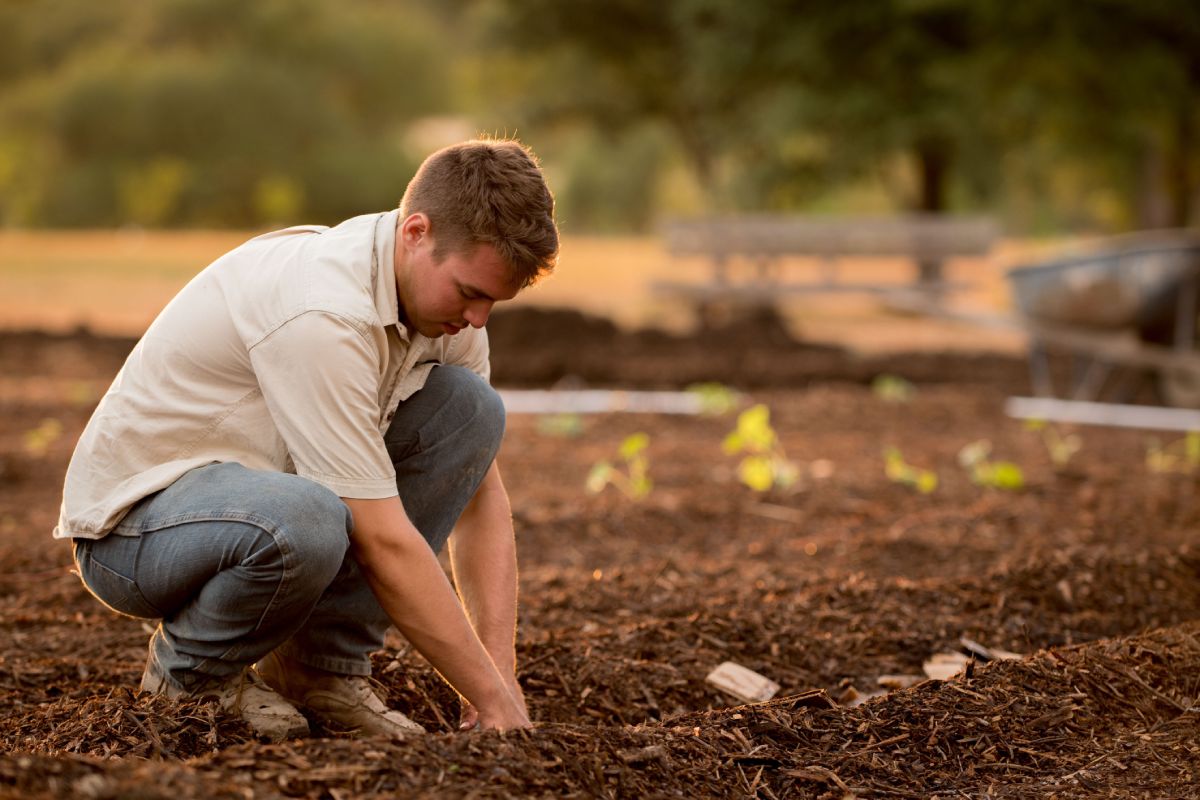
Determining Compost Readiness
Knowing when your compost is ready for use is essential to ensure optimal results in your garden. Look for these indicators to determine compost readiness:
Texture and Appearance
- Dark and crumbly: The compost should have a rich, dark color and a crumbly texture, resembling soil.
- Earthly smell: The compost should have an earthy, pleasant aroma, devoid of any foul odors from undecomposed materials.
Time Frame
- 6 to 12 months: Compost typically takes around 6 to 12 months to fully mature, depending on factors such as temperature, moisture, and the composting method used.
Harvesting and Storing Compost
When your compost is ready, follow these steps to harvest and store it properly:
Harvesting
- Remove uncomposted materials: Before harvesting, separate any remaining large or uncomposted materials from the main compost pile.
- Selective harvesting: You can choose to harvest the entire compost pile or selectively scoop out the finished compost from the bottom layers while leaving some behind to continue decomposing.
Storing
- Container or bin: Transfer the harvested compost to a container or bin for storage.
- Cover and protect: Cover the container to prevent moisture loss and protect the compost from excessive rain or drying out.
- Ventilation: Ensure the container has proper ventilation to allow for airflow, preventing the compost from becoming anaerobic.
Utilizing Compost in Gardening and Landscaping
Compost is a valuable resource for enriching your garden soil and enhancing plant growth. Here are some ways to use compost effectively:
Soil Amendment
- Mixing into garden beds: Incorporate compost into your garden soil to improve its structure, water-holding capacity, and nutrient content.
- Top-dressing: Apply a layer of compost on the surface of garden beds to provide a slow-release source of nutrients to plants.
Planting and Transplanting
- Planting holes: Add compost to the planting holes when transplanting or establishing new plants. This helps provide essential nutrients and promotes healthy root development.
- Seed starting: Create a nutrient-rich seed-starting mix by blending compost with potting soil for healthy seedling growth.
Mulching
- Mulch layer: Apply a layer of compost as a mulch around the base of plants. This helps conserve moisture, suppress weed growth, and provide a steady supply of nutrients.
Compost Tea
- Nutrient-rich solution: Create compost tea by steeping compost in water. Use this nutrient-rich solution to water your plants or as a foliar spray to boost their health and vitality.
By following these steps and utilizing compost effectively, you can harness the power of nutrient-rich soil and witness the transformative impact it has on your garden and landscaping. In the final section, we’ll wrap up our composting journey and leave you with some inspiring thoughts to continue your sustainable practices.
Troubleshooting Common Composting Problems
Composting is a natural process, but sometimes challenges may arise along the way. In this section, we’ll address common issues that composters encounter and provide solutions and troubleshooting tips to help you overcome them.
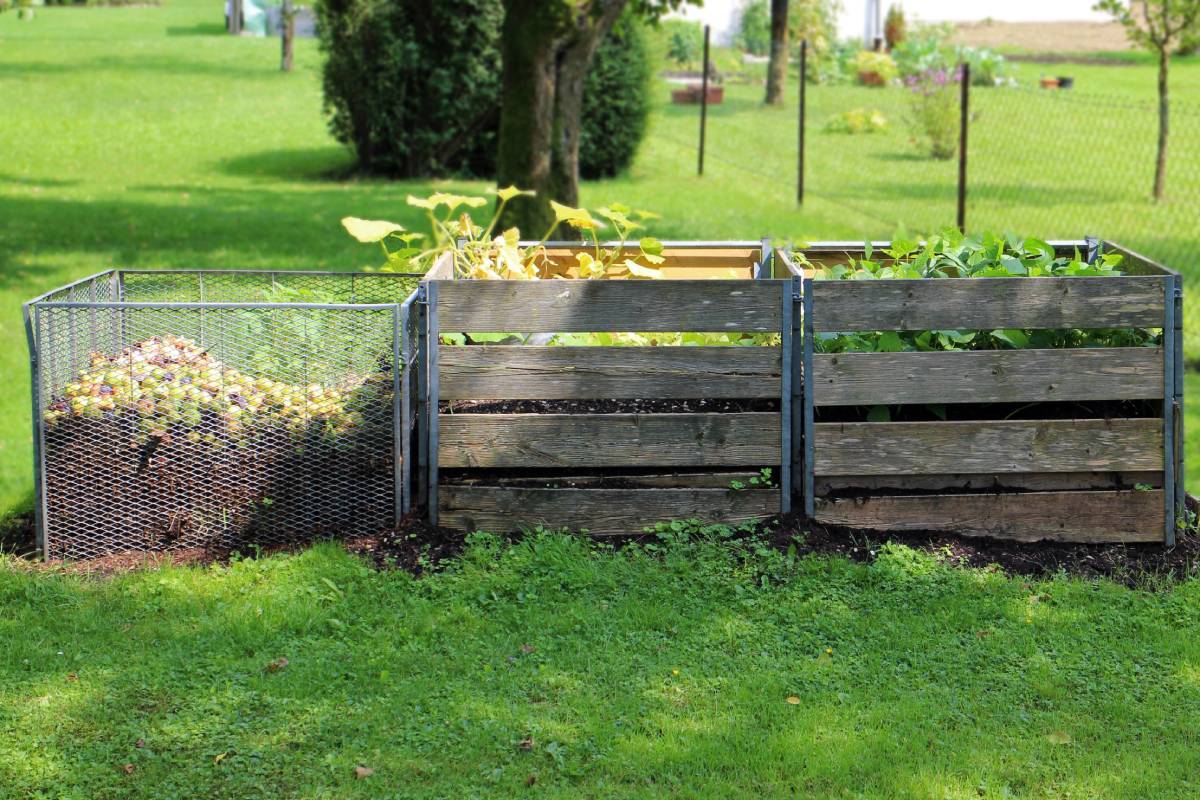
Slow Decomposition
Insufficient Moisture
- Solution: Check the moisture level of your compost pile. If it’s too dry, add water to increase moisture content. Aim for a damp sponge-like consistency.
- Tip: Cover the compost pile with a tarp or lid to retain moisture and prevent excessive evaporation.
Imbalance of Green and Brown Materials
- Solution: Evaluate the ratio of green (nitrogen-rich) and brown (carbon-rich) materials in your compost pile. Adjust the balance by adding more greens or browns as needed.
- Tip: Aim for a roughly equal volume of greens and browns for optimal decomposition.
Inadequate Aeration
- Solution: Turn and aerate the compost pile regularly using a pitchfork or compost turner. This helps introduce oxygen and facilitates the breakdown of organic materials.
- Tip: Consider adding bulky materials like twigs or straw to improve airflow within the pile.
Foul Odors
Anaerobic Conditions
- Solution: Ensure proper aeration and avoid compacting the compost pile. Turning the pile regularly will help maintain aerobic conditions.
- Tip: Incorporate coarse materials like shredded cardboard or wood chips to promote airflow and prevent compaction.
Imbalance of Green and Brown Materials
- Solution: Reassess the balance of green and brown materials. Too many greens can lead to a strong odor. Add more browns to create a better balance.
- Tip: Avoid adding oily or fatty food scraps, as they can contribute to unpleasant odors.
Excessive Moisture
- Solution: If your compost pile is too wet, add dry brown materials like shredded leaves or newspaper to absorb excess moisture.
- Tip: Consider using a compost bin with adequate drainage to prevent water accumulation.
Pest Infestations
Flies and Fruit Flies
- Solution: Cover food scraps with a layer of brown materials or bury them within the compost pile to deter flies. Ensure the compost pile is well-aerated to discourage breeding.
- Tip: Avoid adding meat, dairy, or oily food scraps, as they tend to attract flies.
Rodents and Animals
- Solution: Use a secure compost bin or add a wire mesh barrier around the compost pile to prevent access by rodents and animals.
- Tip: Avoid adding pet waste or any materials that may attract animals to the compost pile.
Composting is a dynamic process, and it may take some troubleshooting to find the right balance and overcome challenges. By implementing these solutions and tips, you can keep your composting process on track and achieve successful results.
Conclusion
Composting is a powerful tool that empowers individuals to make a positive impact on the environment while creating a valuable resource for their gardens. Throughout this guide, we have explored the various aspects of composting, from its importance to the practical steps involved. Let’s recap the benefits of composting and its potential for creating a greener, more sustainable future.
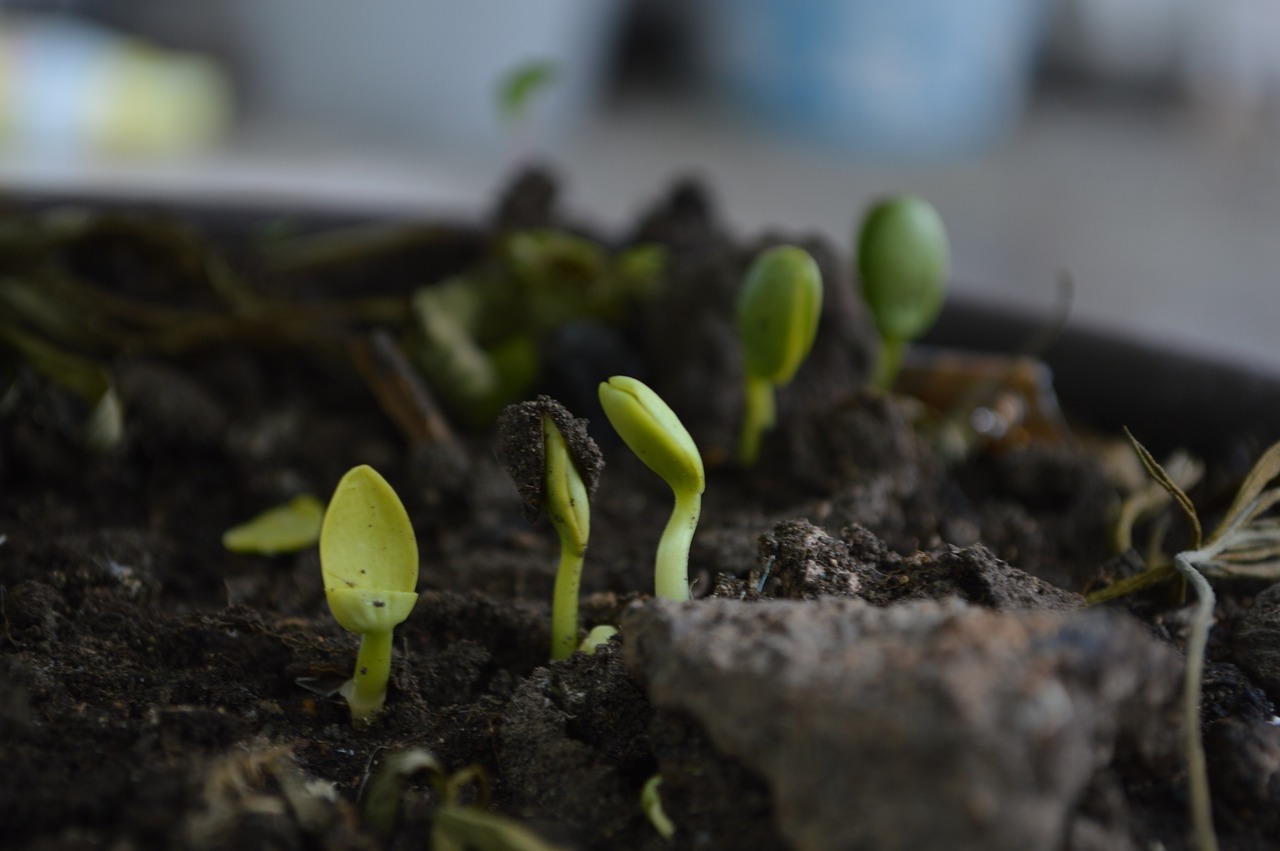
Embracing the Benefits of Composting
Composting is more than just a way to dispose of food scraps; it is a means of nourishing the soil and supporting a healthier ecosystem. By composting, we can:
-
Reduce Food Waste: Composting allows us to divert food scraps from landfills, where they contribute to greenhouse gas emissions. Instead, we transform them into nutrient-rich soil that helps grow more food.
-
Enrich the Soil: Compost is a natural fertilizer that enhances soil structure, increases water retention, and promotes the growth of beneficial microorganisms. It nourishes plants, boosts their resilience, and reduces the need for synthetic fertilizers.
-
Conserve Resources: Composting reduces the reliance on chemical fertilizers, conserves water by improving soil moisture retention, and minimizes the need for pesticides.
Take Action: Start Composting Today!
Now that you understand the power of composting, it’s time to take action. Whether you have a small backyard or live in an apartment, there’s a composting method that suits your situation. By following the simple steps outlined in this guide, you can start turning your food scraps into nutrient-rich soil.
Remember, every kitchen waste item you compost brings you one step closer to reducing your environmental footprint and creating a sustainable future.
Embracing a Greener Lifestyle through Composting
Composting is more than just a technique; it is a way of life. It symbolizes our commitment to sustainable practices and responsible consumption. By composting, we demonstrate our dedication to:
-
Respecting Nature: Composting honors the natural cycle of life and reminds us of the interconnectedness of all living beings. It encourages us to work in harmony with nature and protect our delicate ecosystems.
-
Reducing Waste: Composting is a tangible solution to the global waste problem. It empowers us to reduce our waste footprint, lessen the strain on landfills, and contribute to a circular economy.
-
Inspiring Others: As composters, we have the opportunity to inspire others to join the movement. By sharing our experiences and knowledge, we can encourage friends, family, and community members to embrace composting and make a collective difference.
In conclusion, composting is a simple yet impactful way to turn food scraps into nutrient-rich soil. By engaging in this natural process, we become catalysts for change, creating a more sustainable and environmentally friendly world. So, let’s grab our compost bins, harness the power of composting, and embark on a journey towards a greener lifestyle.

